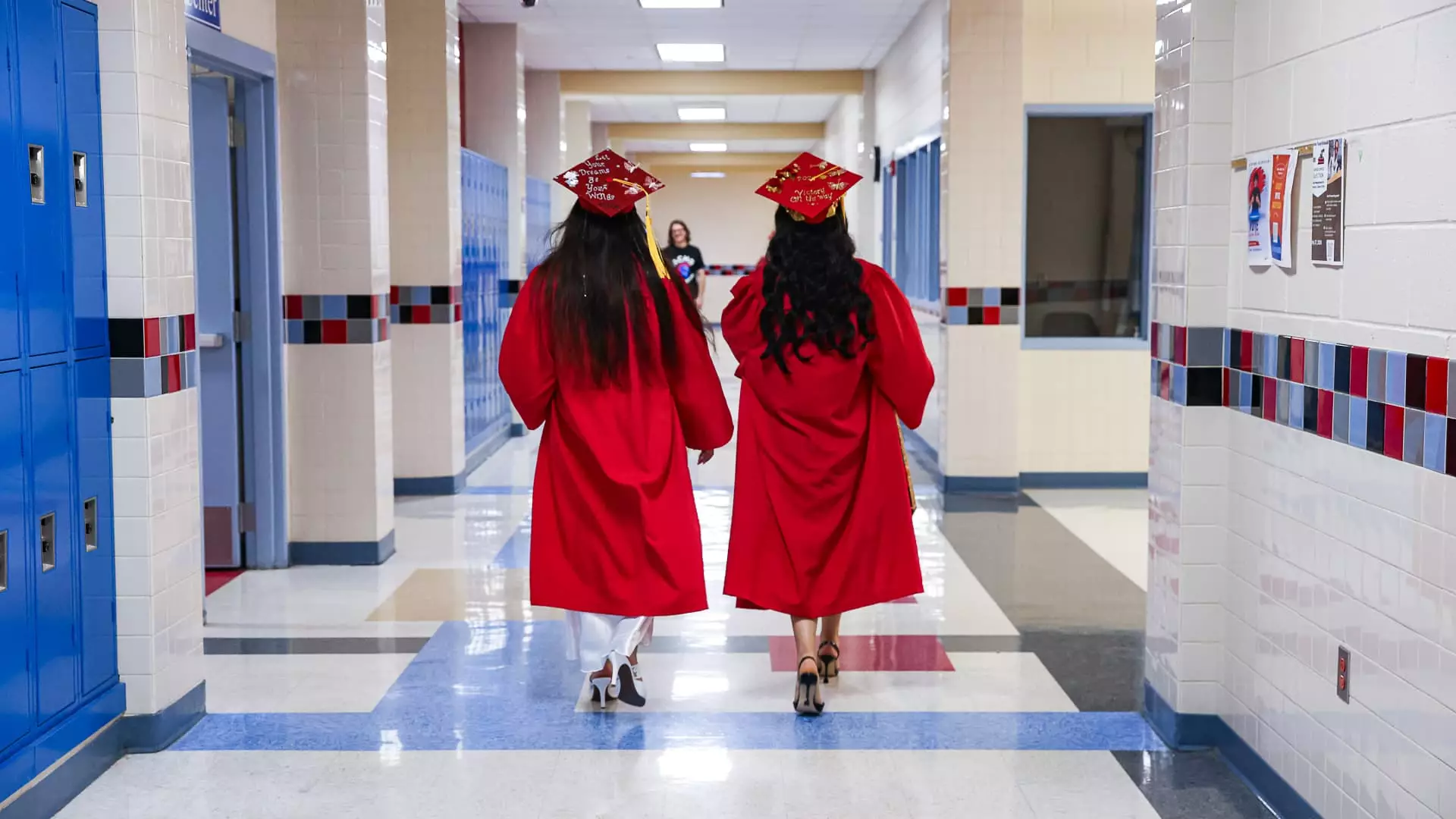In the intricate web of American higher education, the specter of student loan debt casts a long and dark shadow. As the U.S. Department of Education ramps up efforts to collect on federal student loans, millions of Americans find themselves entangled in a system that seems to perpetuate financial hardship rather than provide relief. This dilemma is particularly palpable for the current batch of high school seniors poised to embark on their college journeys, where the expectation of accumulating debt seems almost inevitable. As it stands, approximately 42 million Americans are trudging through the arduous landscape of student loans, with over a million new graduates gearing up to add their names to this daunting statistic. According to higher education analyst Mark Kantrowitz, the average debt burden for students graduating with a bachelor’s degree is now hovering around $40,000—a grim increase from $37,000 only a year prior.
The Illusion of Affordable Education
The issue of college affordability is a calculus that has baffled policymakers and families alike. With college tuition rising at an alarming rate—averaging a 5.6% annual increase since 1983—families are caught in an increasingly untenable position. The average American family now shoulders nearly half of the costs associated with a college education. This escalation in pricing significantly outpaces the growth of household incomes and inflation rates, forcing families to turn to loans as the only viable option to secure a college education for their children. In a context where 45% of high school graduates will attend a four-year institution, it’s disheartening to realize that more than a third will do so under the burden of student debt.
The systemic nature of this issue is alarming; it reveals a troubling trend where educational institutions, often heralded as beacons of knowledge, perpetuate a cycle of financial strain. The assertion made by U.S. Secretary of Education Linda McMahon that many colleges have monetized student loans while failing to deliver on their educational promises underscores the severity of the crisis. The nonprofit labels adopted by these institutions mask a reality where tuition hikes are rampant, leading to an increase in graduates laden with crippling debt.
The Misallocation of Funding
Integral to understanding the student loan crisis is the diminishing support from state and local governments. A stark decline in funding for higher education has shifted the financial burden onto students and their families, resulting in a staggering boom in tuition prices. This dramatic pivot in funding—where tuition now accounts for nearly fifty percent of college revenue—presents a host of challenges that seem insurmountable for students grappling with the decision to further their education. In the early 1990s, state and local government funding accounted for a much larger portion of college financing, leaving students with a far more manageable share of educational costs.
Michele Zampini, the Senior Director of College Affordability at The Institute for College Access & Success, aptly characterizes this predicament by stating that the higher education system has not made a “good faith effort” to address the core issues contributing to rising costs. Instead of tackling these systemic problems, the apparatus of higher education appears stuck in a repetitive cycle of ad-hoc solutions that ultimately exacerbate the plight of students.
Perpetuating a Cycle of Inequality
Moreover, this phenomenon transcends mere financial implications; it perpetuates a cycle of inequality. For many, the reality of student debt is that it limits future opportunities—homeownership, career choices, and even the ability to start a family. The burden falls heaviest on those from marginalized communities, who often lack the financial safety nets available to more affluent peers. The greater systemic issues of inequality are thus only worsened by the lack of affordable education, leaving countless students trapped in a relentless cycle of debt, barely making ends meet.
The plight of students regarding student loans is emblematic of a broader societal malaise—where the pursuit of education, a fundamental pillar of progress, transforms into a lawsuit of financial servitude. Presently, as we watch the next generation prepare to partake in this dubious journey, one must question not only the fairness of our educational system but also the moral obligation of society to rectify these disparities.


Leave a Reply